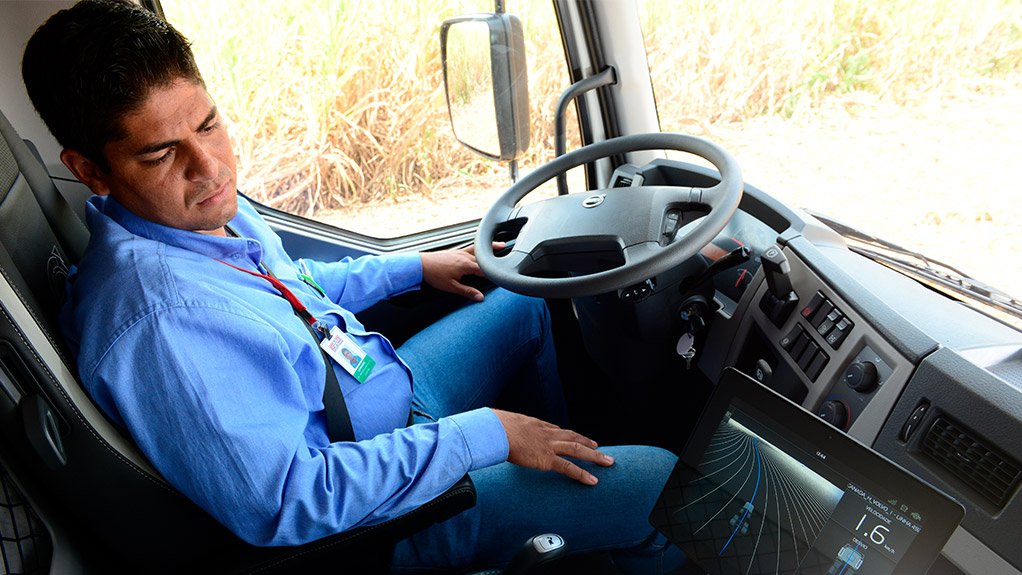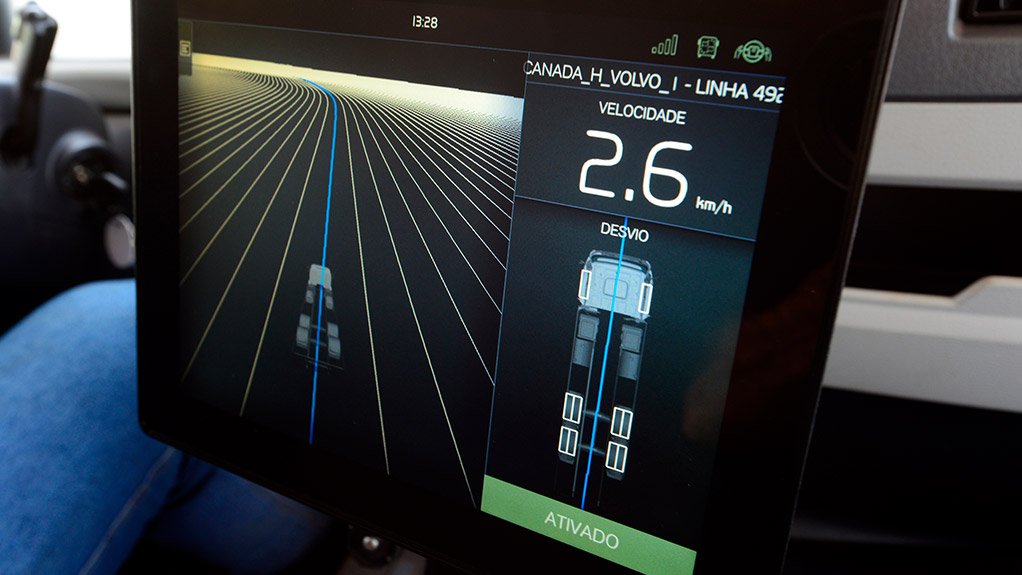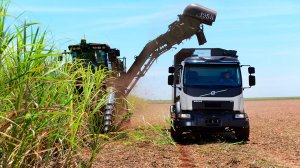Volvo Trucks is testing a self-steering truck for use in the sugar cane industry. This follows autonomous refuse collection trials in Gothenburg, Sweden, as well as self-steering vehicle tests at the Kristineberg mine, in northern Sweden.
Volvo Trucks believes its newest self-steering truck can boost productivity at Brazilian sugar-cane growers.
The truck, which is used to transport newly harvested sugar cane, is steered through the fields, avoiding damage to the young plants that will form the following year’s crop.
An estimated 4% of the crop is lost as young plants are run over and the soil compacted by moving vehicles. This can translate into significant lost revenue.
In Maringá, an hour’s flight west of São Paulo, the Usina Santa Terezinha Group produces sugar and ethanol from its own sugar-cane crops.
In the past growing season, the company’s fields have served as a test area for a prototype self-steering vehicle from Volvo Trucks.
The truck was developed to examine how automated driving can make it possible to avoid damage to soil and crops, thus boosting revenues. The potential for bigger harvests is significant – up to ten tons per hectare per year.
“With the help of Volvo Trucks’ solution we can increase productivity, not just for one single crop, but for the entire lifecycle of the sugar-cane plant, which lasts five to six years,” says Santa Terezinha finance and procurement director Paulo Meneguetti.
Currently, sugar cane is brought in from the fields using harvesters and manually controlled trucks, which drive alongside each other at a low speed.
When a truck is fully loaded and drives off to empty its load, the next one moves up next to the harvester and the procedure is repeated.
The big challenge for the truck driver is to match the speed of the harvester and at the same time concentrate fully on driving in its tracks, so as not to trample the nearby plants that will become the following year’s crop.
Volvo Trucks says it has solved the problem with a driver-assistance system that automates steering.
It ensures that the truck always maintains exactly the right course when it drives to, alongside and away from the harvester, so that no plants are trampled.
With the help of GPS receivers, the truck follows a coordinate-based map across the sugar-cane field.
Two gyroscopes ensure that not only the front wheels, but the entire vehicle is steered with precision, to prevent the truck from veering more than 25 mm laterally from its set course.
When loading, the driver can choose to regulate speed with the help of the vehicle’s cruise control, or to accelerate and brake manually.
Since the driver is released from the burden of tiring high-precision steering, it is easier to remain focused and work in a more relaxed manner throughout the shift.
“With this solution we will soon be able to significantly increase the productivity of our customers in the sugar-cane industry,” believes Volvo Group Latin America president Wilson Lirmann.
“At the same time, we will improve their drivers’ working conditions and safety. This in turn will make the job more appealing, and make it easier to recruit and maintain drivers.”
Later this year the project will transition into the product development phase, with more vehicles to be field-tested.
After that, the truck can be expected to become commercially available in the foreseeable future, says Volvo Trucks.
Edited by: Creamer Media Reporter
EMAIL THIS ARTICLE SAVE THIS ARTICLE
ARTICLE ENQUIRY
To subscribe email subscriptions@creamermedia.co.za or click here
To advertise email advertising@creamermedia.co.za or click here
















